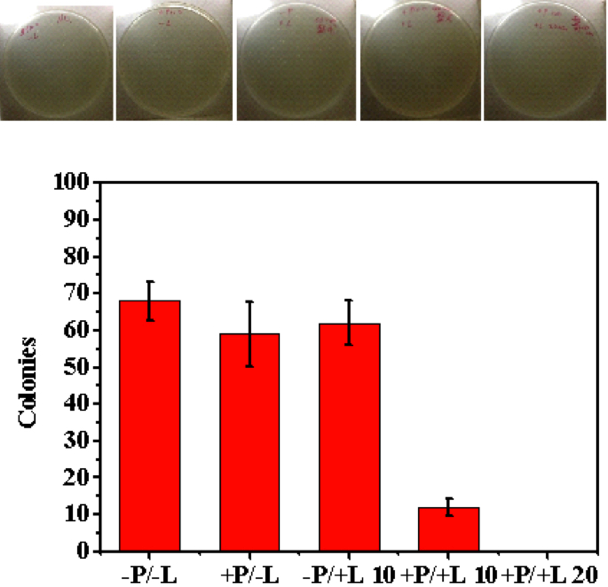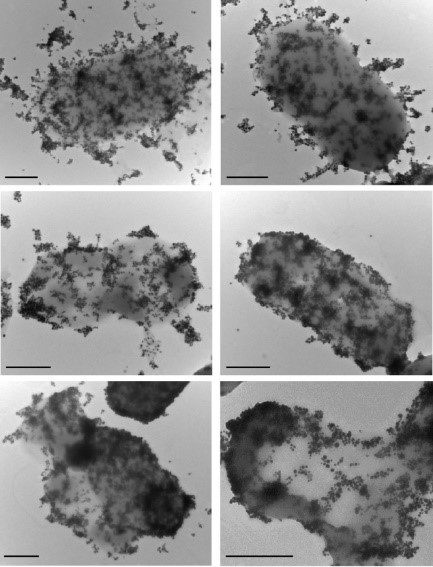光動力學殺菌療法:治療多重抗藥性泌尿道感染的替代方式
張德撝1、邱逸淳2、黃志嘉3
1臺北市立聯合醫院忠孝院區泌尿科
2臺北市立聯合醫院和平院區泌尿科
3國立成功大學光電科學與工程學系
Antibacterial photodynamic therapy mediated by methylene blue for Escherichia coli: An alternative treatment choice for drug-resistant urinary tract infection
Te-Wei Chang 1、Yi-Chun Chiu2、Chih-Chia Huang3
1Urology department, Zhongxiao Branch, Taipei City Hospital
2Urology department, Heping Branch, Taipei City Hospital
3Dept. of Photonics, National Cheng Kung University, Tainan
Purpose
Infectious disease is the most terrifying disease before the antibiotic era. As antibiotic abuse recently, the antibiotic resistance and multi-drug resistance bacteria emerged quickly. We must seek other treatment for infectious disease due to the increasing serious super-bacteria. Photodynamic therapy (PDT) was brought forward about 100 years ago and is well studied in malignancy and non-malignancy disease. Several studies revealed the possibility of PDT becoming the next generation anti-bacteria method. Urinary tract infection (UTI) is the most common infectious disease in current era and Escherichia coli (E. coli) is the most common pathogen yielded in UTI. In this article, we presented our result of anti-bacteria ability to E. coli by PDT mediated with methylene blue (MB)-based nanoparticles in vitro.
Material and Methods
Material
Tannic acid (TNA) and MB were received from Alfa Aesar. Hydrogen tetrachloroaurate (III) trihydrate (HAuCl4•3H2O), 99.9% was obtained from Bio-Tech. HAuCl4 were mixed with TNA, as a reductant under stirring. For synthesis of Au@MB nanoparticles (NPs), 1 mL 5 mM HAuCl4 solution were mixed with fresh 2.5 mM TNA at room temperature, evolving for 30 min. Afterward, 25 μL of MB solution (5 mM) was added into the above mixture solution for another 30 minutes. In the end, the resulting solution was purified to collect Au@MB NPs by centrifugation and re-dispersion process more than three times.
Methods
E. coli was incubated with Au@MB NPs (100 ppm [Au]) for 1h. Then, the Au@MB NPs-treated bacteria was exposed under 660 nm for 10 or 20 min (125 mW/cm2). The exposed bacteria was diluted in phosphate-buffered saline (PBS) and the diluted mixture was spread on the ager plate. After 24 hours incubation, the viable colonies were counted. After bacteria incubating with Au@MB NPs, we removed the excess PBS via centrifugation. Then, deionized water was added in the bacteria and 10 µL of the bacteria (1×10^7) was dropped cast on the transmission electron microscope (TEM) grids.
Results
The PDT effect was investigated by reacting E. coli with 100 ppm[Au] Au@MB NPs followed by 660 nm laser (125 mW/cm2) irradiation for 10 min and 20 min. According to the number measurement of colonies (Figure 1a and 1b), more than 80% and 100% bacterial death was determined for the Au@MB NPs-treated bacteria received irradiation time at 10 min and 20 min, respectively. TEM image studies showed that enormous Au@MB NPs were adhered and accumulated on the surface of bacteria E. coli after 1 hour incubation, and the bacteria maintained its morphology and integrity (Figure 2a). After light irradiation with 660 nm (125 mW/cm2) for 20 min, the membrane integrity of E. coli was disturbed (Figure 2b). In the end, the irradiated bacteria after further 6 hour incubation was clearly damaged and the cell membrane became incomplete and leaky(Figure 2c).

Figure 1. Colonies of E.coli treated with Au@MB NPs and laser irradiation
Figure 2. TEM image of E. coli treated with Au@MB NPs laser irradiation

Conclusion
Au@MB NPs triggered PDT is a very promising treatment for bacteria based on in vitro studies. The preliminary results showed that the Au@MB NPs was capable of depletion of the E. coli. The potential combination with surface enhanced Raman scattering for diagnosis with vibrational signals from the MB onto the surface of Au NPs could assist the real-time monitor of the nano-drug delivery, which will report in the following work.
附件: